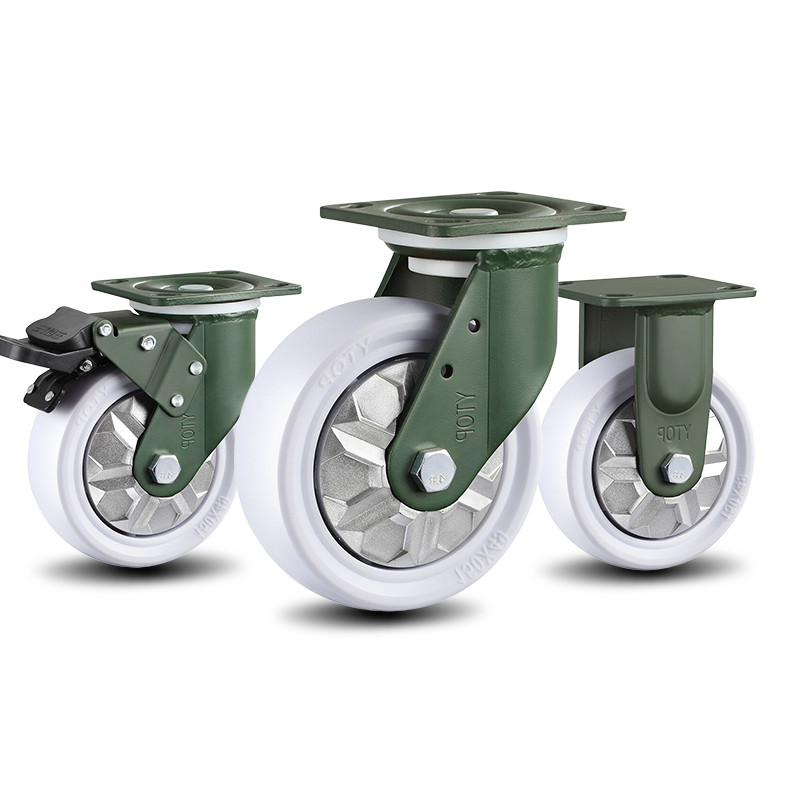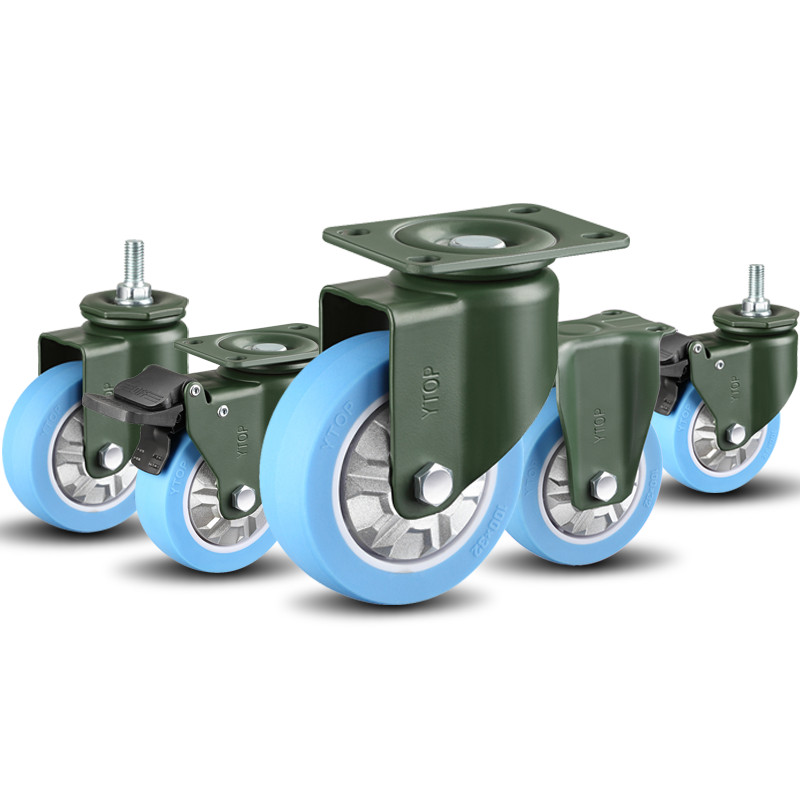In the vast field of caster materials, TPU, TPE and TPR are three materials that have attracted much attention. They each have unique performance characteristics and are suitable for different application scenarios. For purchasers of caster raw materials, it is vital to understand the characteristics and application scope of these materials.
TPU Caster Material
TPU (thermoplastic polyurethane) caster material is known for its excellent abrasion resistance, oil resistance, excellent elasticity and load bearing properties. These properties make TPU caster compound widely used in luggage wheels and casters for many industries. Its high abrasion resistance means that it can maintain stable performance for a long period of time, reducing performance degradation due to wear and tear and the frequency of replacement. In addition, TPU caster material is noisy when working, but this reflects its excellent load bearing and stability. However, it should be noted that TPU is not resistant to hydrolysis, so prolonged contact with water should be avoided during use and storage.
TPE caster material
TPE (thermoplastic elastomer) caster compound combines the high elasticity, strength and resilience of rubber with the characteristics of injection molding. This makes TPE casters more flexible and efficient in the manufacturing process. In addition, TPE casters are environmentally friendly and non-toxic, with excellent coloring, soft touch, weather resistance, fatigue resistance and temperature resistance. These characteristics make TPE caster material widely used in industries such as luggage wheels and trolley wheels. Its fine abrasion resistance, elasticity and shock absorption make TPE caster material perform well when subjected to heavy loads and impacts. At the same time, the low noise performance of TPE caster material makes it the preferred material for pursuing a quiet environment. In addition, TPE caster material can also be wrapped and bonded with PP, PE, PC, PS, ABS and other base materials, expanding its application areas.
TPR Caster Material
TPR (thermoplastic rubber) caster compound can be regarded as a kind of TPE (in the field of polystyrene elastomer) in a sense. It is SBS-based and has better elasticity than TPE, but is slightly less abrasion-resistant than TPE; nonetheless, TPR caster compound has excellent abrasion resistance, elasticity, and shock-absorption properties, making it suitable for applications such as heavy-duty casters that are subject to heavy loads and impacts. In addition, TPR caster compound is less costly than TPE, giving it an economic advantage. Similar to TPE, TPR caster material can also be overmolded with hard plastics such as PA and PP, increasing its application flexibility.
Summarize
TPU, TPE and TPR caster materials each have their own unique characteristics and applications. TPU is known for its excellent abrasion resistance, oil resistance and load-bearing properties; TPE is favored for its high elasticity, high strength and injection molding processability; TPR has a place in the field of heavy-duty casters due to its excellent elasticity and low cost. When choosing these caster materials, we need to judge according to the specific application scenarios and needs to ensure that the selected materials can meet our requirements.
Post time: Dec-31-2024


